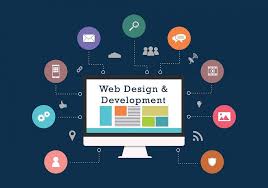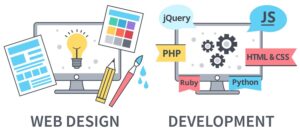🖥️ How to Build a Simple Website: A Beginner’s Guide to Web Design and Development
Creating your own website might seem like a big task, but it’s more achievable than you think. Whether you’re starting a personal blog, a small business site, or just exploring web design and development, this guide will walk you through the basics in easy-to-understand steps.
Creating your own blog website might seem challenging, but it’s more achievable than you think. Whether you’re starting a personal blog or just exploring web development, this guide will help you get started.
Introduction to Web Design and Development
-
What is Web Design?
-
What is Web Development?
-
Importance of a Strong Web Presence
-
Key Differences Between Design and Development
🎨 What Is Web Design and Development?
Web Design and Development is about planning and creating the layout and appearance of a website.
It focuses on:
-
Visual Design: Choosing colors, fonts, and images.
-
User Experience (UX): Making sure the site is easy to use.
-
Responsive Design: Ensuring the site works well on all devices, from phones to desktops.
Web Development is about building the website using code. It includes
Front-End Development: What users see and interact with.
-
Back-End Development: The server-side part that handles data and functionality.
Web Design and Development Process
-
Planning and Requirements Gathering
-
Sitemap and Wireframe Creation
-
Design and Development Phases
-
Testing (Cross-browser, Usability, Performance)
-
Launch and Maintenance
-
🛠️ Tools You’ll Need in Web Design and Development
To start building your website, you’ll need:
-
Text Editor: Programs like Notepad++ or Visual Studio Code
-
Web Browser: Google Chrome or Firefox to view your site.
-
Basic Knowledge of HTML, CSS, and JavaScript: These are the building blocks of web development.
🏗️ Steps to Build a Simple Website
1. Plan Your Website
Decide on the purpose of your site. Is it a blog, portfolio, or business site? Sketch a layout on paper or use a tool like Figma.
2. Write the HTML
HTML (HyperText Markup Language) structures your content.
Here’s a basic example:
3. Style with CSS
CSS (Cascading Style Sheets) makes your website look attractive. Add this to your HTML file:
4. Add Interactivity with JavaScript
JavaScript adds functionality to your site. For example, a simple alert:
5. Test Your Website
Open your HTML file in a browser to see how it looks and works. Make adjustments as needed.
🌐 Publishing Your Website
Once you’re happy with your site, you can publish it:
-
Free Hosting Options: GitHub Pages, Netlify, or Vercel.
-
Paid Hosting Providers: Bluehost, HostGator, or SiteGround.
📚 Tips for Beginners
-
Start Small: Begin with a simple project and gradually add more features.
-
Use Online Resources: Websites like W3Schools and MDN Web Docs offer tutorials and examples.
-
Practice Regularly: The more you code, the better you’ll get.
🎯 Conclusion
Building a website is a rewarding skill that anyone can learn. By following these steps and practicing regularly, you’ll be on your way to creating your own web presence.
Would you like assistance with specific aspects, such as choosing a hosting provider or adding more advanced features to your website?
Transform your online presence with expert web design and development services from Digital Solution Tech. Our team specializes in creating responsive, user-friendly websites that enhance your brand’s visibility and performance. From custom website design to full-stack development, we offer tailored solutions to meet your business needs. Whether you’re launching a new site or upgrading an existing one, we deliver results that drive engagement and conversions. Visit Website Design Services to start building your digital success today!






